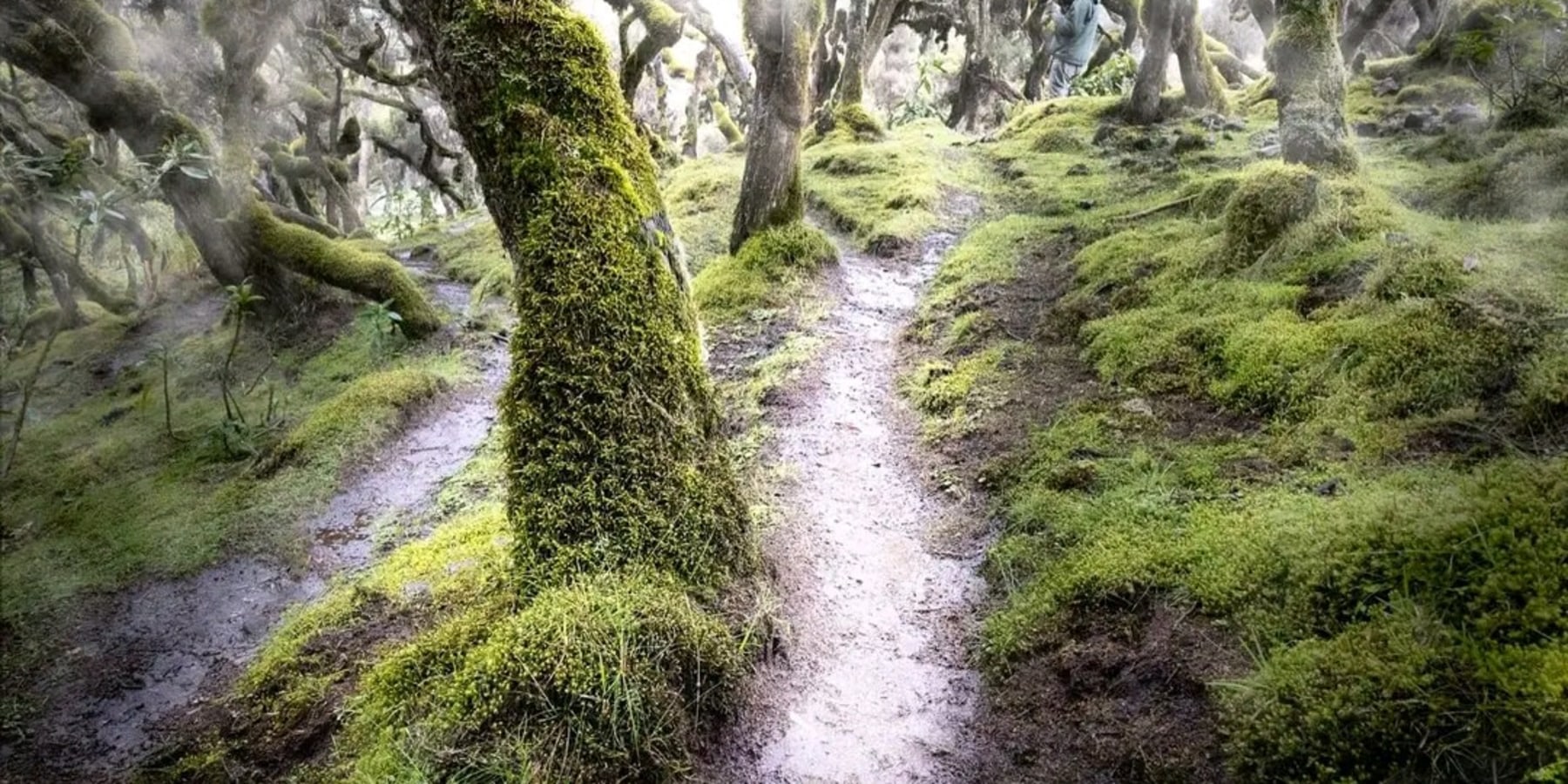
The southern and largest area of the park consists of the second largest forest in Ethiopia: the Harenna forest. Along with the adjacent State- and community-managed forest outside the park, it constitutes an area of over 4,000 km2. It is also the largest cloud forest in the country. The road from the plateau takes you down the Harenna escarpment and into the forest. Mountain bamboo grows within the forest, particularly on steep slopes. Rubus Steuderi, a member of the Blackberry family, grows along the road from April to June. The upper area of the Harenna forest is a wet cloud forest with an extensive bamboo belt, while the lower parts are drier mountain forests. At about 2,200m, as the slopes become gentler, larger trees of up to 30m tall appear, and the canopy closes. These include fern pine (Podocarpus gracilior) and fig trees (Ficus spp.) of massive girth. Branches are covered with dense epiphytes. In the lower areas of the forest, wild forest coffee (Arabica sp.) grows.
Because the forest is so dense and clearings are few and far between, the elusive animals of the forest have little trouble staying hidden. Black-and-white colobus monkey, olive baboon, warthog and Menelik’s bushbuck are common. With a little luck and perseverance, you might see a giant forest hog, a bush pig or an endemic Bale monkey. Clearings are the best places to look for lions, leopards and African wild dogs. Genets, civets, porcupines, and hyenas are all active at night.
Birds of the Harenna forest are equally elusive. Look for the Abyssinian hill babbler, Abyssinian crimson-wing, Ayre’s hawk-eagle, silvery-cheeked hornbill, black-winged lovebird, Abyssinian oriole, yellow-fronted parrot, white-cheeked turaco and narina trogon. A wide range of migrant birds can also be spotted, including Palearctic warblers.

